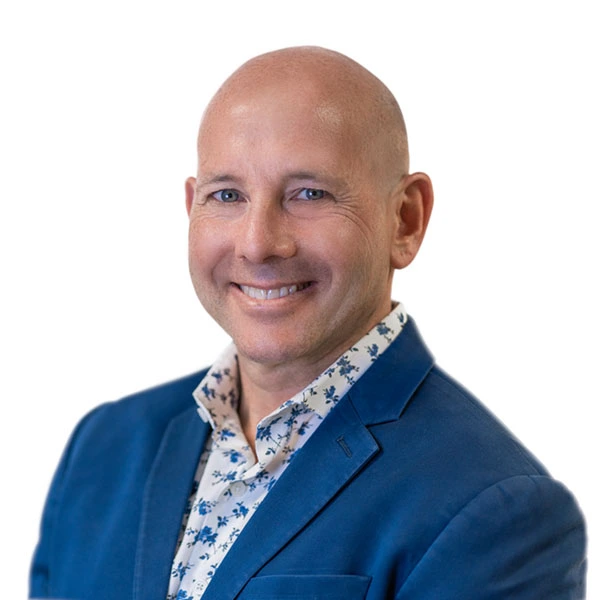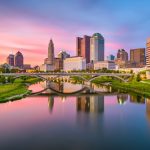The term recreational drug is often misleadingly associated with feelings of pleasure and leisure.
While the drug-induced altered state of consciousness, commonly referred to as getting “high” or “tripping,” can be enjoyable, the hard truth is that most of these “fun” drugs are illicit substances that may lack therapeutic benefits or require strict medical administration due to their potential health harms.
These health harms are reflected in the estimated total of 7,714,521 drug-related ED visits in the U.S. in 2022. Acute anxiety, paranoia and hallucinations were common side effects in patients experiencing a “bad drug trip.” Continue reading to learn more about bad trips, including their symptoms, causes and medical implications.
Table Of Contents
- What is a Bad Trip?
- Symptoms of a Bad Drug Trip
- What Substances Can Cause a Bad Drug Trip?
- Causes of a Bad Drug Trip
- Long-Term Side-Effects of Psychoactive Drug Use
- 6 Practical Safety Tips to Do During a Bad Drug Trip
- How to Avoid a Bad Drug Trip?
- Bad Drug Trip − Final Considerations
- People Also Ask

What is a Bad Trip?
In medical terms, a bad trip is a negative and often frightening psychological experience that occurs after taking certain psychoactive and dissociative substances.
These psychedelic and dissociative drugs can temporarily alter a person’s humor, thoughts and perception of reality by affecting the balance of chemicals or activity in the brain, particularly in the prefrontal cortex. Many of these substances are derived from plants and fungi and have been used for traditional or religious ceremonies for thousands of years. Some others are manufactured in laboratories.
Symptoms of a Bad Drug Trip
The intensity and incidence of bad trip symptoms have a very high degree of individual differences and cannot be predicted.
This severity spectrum may result from a combination of factors rather than the drug alone. Some contributing factors may be the mood and mental state of the person before taking the drug and during the development of the symptoms.
Among the symptoms of a bad trip, we have:
- Intense anxiety
- Paranoia
- Hallucinations
- Distorted perceptions
- Panic attacks
- Sense of danger or feeling threatened
- Depersonalization/derealization
- Loss of control
- Time distortion
What Substances Can Cause a Bad Drug Trip?
The following chart provides a short overview of substances that could induce bad trips and briefly describes their effects.
| Substance | Description |
|---|---|
| LSD (Acid) | One of the most potent hallucinogens, causing intense alterations in perception, mood, and thought. |
| Psilocybin Mushrooms (Magic Shrooms) | Natural hallucinogens that induce hallucinations, altered perceptions, and emotional intensity. |
| MDMA (Molly) | Known for inducing euphoria, but can lead to anxiety, panic, and discomfort at high doses. |
| Ketamine | A dissociative anesthetic that causes disorientation, confusion, and vivid hallucinations. |
| PCP (Phencyclidine) | Induces hallucinations, delusions, extreme paranoia, and detachment from reality. |
| Salvia divinorum | Causes intense but short-lived hallucinogenic effects, including disorientation and fear. |
| DMT | A potent psychedelic substance producing overwhelming hallucinations and ego dissolution. |
| Cannabis Edibles | Mild psychedelic effects, but high doses can lead to intense anxiety, paranoia, disorientation, and hallucinations. |
What causes a bad trip?
As symptoms’ severity can vary based on different factors, a bad trip can also be triggered by different reasons or a mix of them. Here are some common causes:
- Consuming a higher dose of a drug than intended or anticipated
- Variants in the purity or potency of the substance
- Differences in individual brain chemistry, genetics and psychological factors
- Negative emotions, stress or being in an unfamiliar or unsafe environment
- Pre-existing mental health conditions such as anxiety disorders, depression or psychosis
- Polysubstance use, including alcohol or prescription medications
- Poor knowledge about the drug’s side effects and proper dosage
- Fatigue, dehydration, hunger or recent traumatic experiences
Long-Term Side-Effects of Psychoactive Drug Use
Psychoactive effects on the brain and body are often transient, but continuous hallucinogens and psychedelics use can cause long-term health effects, which include:
- Flashbacks
- Hallucinogen persisting perception disorder (HPPD)
- Persistent psychosis
- Mood and anxiety disorders
- Cognitive impairment
- Increased risk of mental health disorders
- Impact on personality and spirituality
- Changes in perception and thought processes
6 Practical Safety Tips to Do During a Bad Drug Trip
Handling a bad drug trip requires practical and calm measures, especially if you are helping out during an episode. Here are six safety tips to help you manage this situation:
-
Stay Calm and Reassuring
Keep yourself calm and try comforting the person experiencing the bad trip. Reassure them that you are there to help them through what they feel is temporary. Avoid displaying signs of panic or frustration.
-
Ensure Safety and Remove Hazards
Remove any potential hazards from the setting, such as sharp objects, open flames, or any element that could pose a risk of injury, to create a safe space.
-
Encourage Deep Breathing and Relaxation
Encourage slow, deep breaths to help regulate their heart rate and calm their nervous system. Add guidance through relaxation techniques such as progressive muscle relaxation or visualization exercises to help them feel more grounded.
-
Provide Distractions and Comfort Items
Distractions can redirect their focus away from the intensity of the trip. This could include playing calming music, engaging in light conversation about positive topics or providing comforting items like blankets or pillows.
-
Stay Hydrated and Monitor Vital Signs
Have water bottles available, as dehydration can aggravate discomfort and confusion. Monitor physical well-being for signs of distress, such as rapid heartbeat, high body temperature or difficulty breathing.
-
Seek Medical Assistance if Necessary
If the condition worsens or signs of severe distress are present, do not hesitate to seek professional medical assistance. Call emergency services or contact your nearest medical facility for evaluation and treatment.
How to Avoid a Bad Trip?
There are two important and easy actions to avoid having a bad trip: − 1) Abstain from recreational drug use ultimately to be safe against the risks of a bad trip and the long-term effects of drug use − 2) Avoid taking medications referred to as “trip killers” such as benzodiazepines (e.g., diazepam or lorazepam) or antipsychotics (e.g., haloperidol). Self-administering these drugs is risky and can lead to further complications.
Sobriety remains the only 100% reliable method to prevent a bad drug trip. It ensures clarity of mind and minimizes the likelihood of experiencing the numerous risks associated with psychoactive drug use.
Bad Drug Trip − Final Considerations
While a group of psychedelics is under research for their potential therapeutic applications in psychotherapy, this administration is done under strict medical supervision and does not condone their recreational use.
However, in the scenario of a bad trip, which typically lasts from minutes to several hours, depending on the drug, follow the safety tips mentioned above. If symptoms persist beyond this timeframe, become severe or substance addiction is present, seek immediate medical assistance to safe management and further prevention.
People Also Ask
What are psychedelic and dissociative drugs?
Psychedelic drugs like LSD alter perception, mood, and thought, often inducing hallucinations. Dissociative drugs like ketamine produce feelings of detachment from reality, leading to disorientation and dissociation from oneself and surroundings.
What are the symptoms of a bad drug trip?
Bad trip symptoms include intense anxiety, paranoia, hallucinations, distorted perceptions, panic attacks, a sense of impending doom, depersonalization or derealization, loss of control, time distortion, and physical discomforts such as nausea or sweating.
What is a bad trip like?
A bad trip can be a deeply distressing and frightening experience. During a bad trip, individuals may experience intense anxiety, paranoia, confusion, and a distorted sense of reality. They may have terrifying hallucinations, feel disconnected from themselves or their surroundings, and struggle to distinguish between what is real and what is not. Overall, a bad trip can be overwhelming and impact the individual’s mental and emotional well-being.
How to get out of a bad trip?
To get out of a bad trip, shift to a calm environment, practice relaxation techniques like deep breathing, and seek the company of a trusted friend for support. Engage in distracting activities such as listening to soothing music or focusing on a simple task. Remember that the effects are temporary, so seek professional help if needed.
What to do when someone is having a bad trip?
When someone is having a bad trip, ensure their safety in a calm environment, reassure them, and stay close for support. Encourage relaxation techniques and offer gentle distractions. If needed, seek professional help or contact emergency services.
Are psychedelic and dissociative drugs safe?
Psychedelic and dissociative drugs carry significant risks, including psychological distress, trauma and physical impairment. Avoid their use as they can lead to unpredictable and potentially dangerous experiences.
Page Sources
- Drug Abuse Warning Network (DAWN): Findings from Drug-Related Emergency Department Visits, 2022. (n.d.). CBHSQ Data. https://www.samhsa.gov/data/report/2022-findings-drug-related-emergency-department-visits
- Psychedelic and Dissociative drugs | National Institute on Drug Abuse. (2024, March 4). National Institute on Drug Abuse. https://nida.nih.gov/research-topics/psychedelic-dissociative-drugs#references
- Lee, M., & Roth, B. L. (2012). Hallucinogen actions on the human brain revealed. Proceedings of the National Academy of Sciences of the United States of America, 109(6), 1820-1821. https://doi.org/10.1073/pnas.1121358109
- Aday, J. S., Davis, A. K., Mitzkovitz, C. M., Bloesch, E. K., & Davoli, C. C. (2021). Predicting Reactions to Psychedelic Drugs: A Systematic Review of States and Traits Related to Acute Drug Effects. ACS Pharmacology & Translational Science, 4(2), 424-435. https://doi.org/10.1021/acsptsci.1c00014
- Structure of LSD and its receptor explains its potency. (2017, January 17). ScienceDaily. https://www.sciencedaily.com/releases/2017/01/170126132541.htm
- Substance use. (2023, December 14). PAHO/WHO | Pan American Health Organization. https://www.paho.org/en/topics/substance-use
- Valeriani, G., Corazza, O., Bersani, F. S., Melcore, C., Metastasio, A., Bersani, G., & Schifano, F. (2015). Olanzapine as the ideal “trip terminator”? Analysis of online reports relating to antipsychotics’ use and misuse following the occurrence of novel psychoactive substance‐related psychotic symptoms. Human Psychopharmacology: Clinical and Experimental, 30(4), 249–254. https://doi.org/10.1002/hup.2431

 Authored by
Authored by  Reviewed by
Reviewed by 
